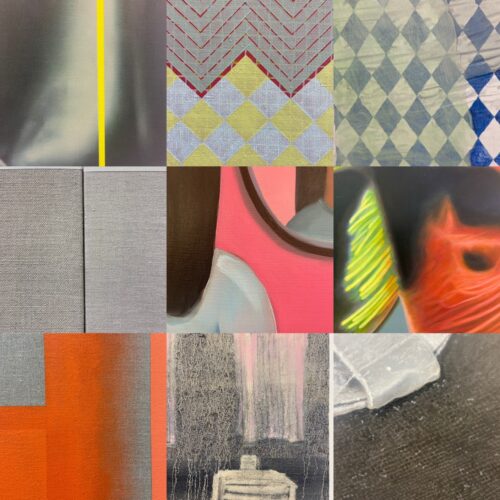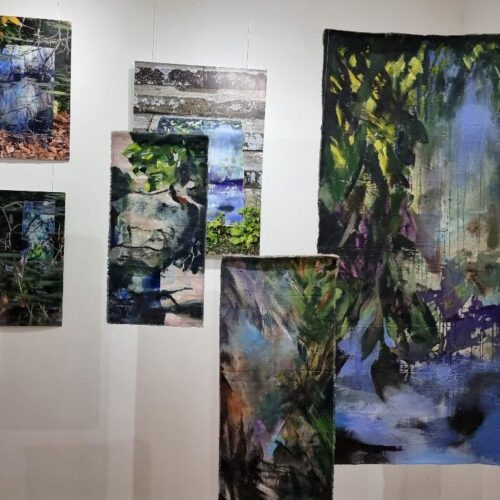
Calling north for an inspirational study day
 A two pronged study day is planned for 21st January in Liverpool. Two exciting exhibitions, in a wonderful city.
A two pronged study day is planned for 21st January in Liverpool. Two exciting exhibitions, in a wonderful city.
First we’ll go to Tate Liverpool to learn about Lewis Carroll’s timeless novels, Alice’s Adventures in Wonderland and Through the Looking Glass, which have fascinated children and adults alike since their publication over 150 years ago. Alice in Wonderland is the first exhibition of its kind to explore how Lewis Carroll’s stories have influenced the visual arts, inspiring generations of artists. The exhibition will provide insight into the creation of the novels and the inspiration they have provided for artists through the decades. The starting point for the exhibition is Carroll’s original manuscript, written in 1864 as a present for ten year old Alice Liddell. Carroll’s own illustrations ensured that images were central to the story, creating a visual world which took on a life of its own. The exhibition will offer a rare opportunity to view Carroll’s own drawings and photographs, alongside John Tenniel’s preliminary drawings for the first edition of the novel.
Carroll’s stories were soon adopted by other artists. Surrealist artists from the 1930s onwards were drawn towards the fantastical world of Wonderland where natural laws were suspended. From the 1960s through the 1970s, Carroll’s Alice tales also prompted conceptual artists to explore language and its relationship to perception, and the stories inspired further responses in Pop and Psychedelic art. Expect to see works by artists ranging from Salvador Dalí and René Magritte, to Peter Blake and Yayoi Kusama. Alice in Wonderland will also showcase an exciting selection of contemporary art, demonstrating the continuing artistic relevance of Carroll’s novels. Works by Anna Gaskell, Annelies Strba and Torsten Lauschmann will all appear, exploring ideas such as the journey from childhood to adulthood; language, meaning and nonsense; scale and perspective; and perception and reality.
Then we’ll go to see an exhibition of The Art Books of Henri Matisse at the Walker Art Gallery. The exhibition comprises 63 framed original illustrations with text from four of Matisse’s most significant books, including his famous ‘Jazz’ (1947), one of the most celebrated artists’ books in the history of modern art. Also on display will be a number of artists’ books from the Walker Art Gallery’s permanent collection by artists such as Ed Ruscha, Derek Boshier, Gilbert & George, Tom Phillips and Jeff Nuttall.
The study visit will start at 11am and Visual Communications Curriculum Leader Christian Lloyd will be joining me. Places are free to OCA students. To book a place please email enquiries@oca-uk.com






It was a bone penetrating wind that whistled through the streets of Liverpool that January day, but inside the Walker Art Gallery the influence of a searing Mediterranean sun was evident in the hot colours of The Art Books of Henri Matisse. This tastefully curated exhibition focuses on “Jazz”, which is probably Matisse’s most famous book. It features reproductions of his original collages accompanied by lithography prints of the artist’s own handwritten text – his philosophies about art and other introspective musings. The raw primary colour, like the sun of the south of France, penetrates the viewer’s soul, is completely irrepressible, impossible to hide from and totally enervating. By contrast the grey text, which flows in an arabesque style, bares little or no topical reference to the images, being conceived by Matisse purely for its visual effect, as a joining device within the overall composition.
Published in Paris by Efstratios Tériade in 1947, the example on show is number 181 of 250 copies which were centre folded. The same images and text were reproduced in a portfolio version of 100 copies without the centre fold. However, because Matisse was insistent that the published images should reproduce the same vibrant colours of the original collages, which he had painted with Linel gouache, and after several unsuccessful attempts to reproduce them using conventional printing processes and inks, all 350 copies had to be individual made using pochoir. This is an extremely sophisticated and elaborate hand-stenciling process which had previously been employed by Mary Cassatt, Man Ray, and Sonia Delauney. As a consequence, a minimum of five and sometimes thirty separate stencil were employed to create the complex angular and curvaceous shapes. Finally, by directly brushing the same Linel gouaches through hand cut metal stencils it was possible to give the “Jazz” images the same directness and rich colour of the original collages. In places it is possible to see the printer’s brush marks in the gouache surface, and If you look very closely, even the hairline separations between the individual stencils!
So, apart from Matisse’s energy sapping colour and the incomprehensibly complicated pochoir what’s so memorable and inspiring about this exhibition? Well, perhaps not much – that is – apart from the acknowledgement and celebration of the unique place “Jazz”, and more significantly, Matisse’s coloured paper collages, occupy in the history of modern art and their influence on contemporary graphics. He did it first – the genre belongs to him. So I guess that’s enough!
And as for inspiration, look no further than Matisse’s florid text on pages 89 – 93 where he offers this advice to artists: “A NEW PAINTING should be a unique thing, a birth bringing a new face into the representation of the world through the human spirit. The artist should call forth all of his energy, his sincerity and the greatest possible modesty in order to push aside during his work the old cliches that come so readily to his hand and can suffocate the small flower that itself never turns out as one expected.”
I know that feeling!